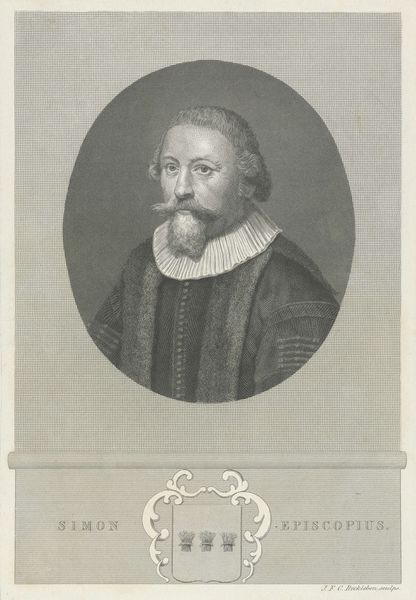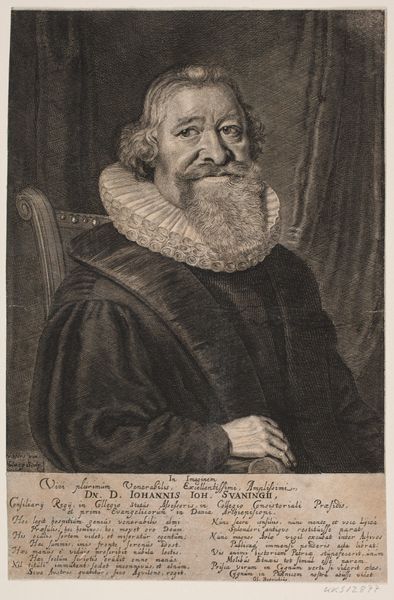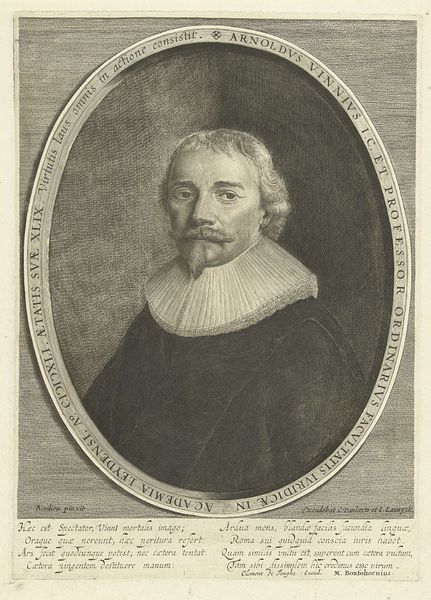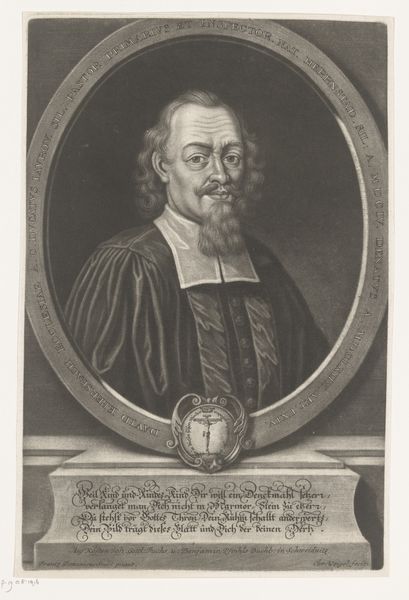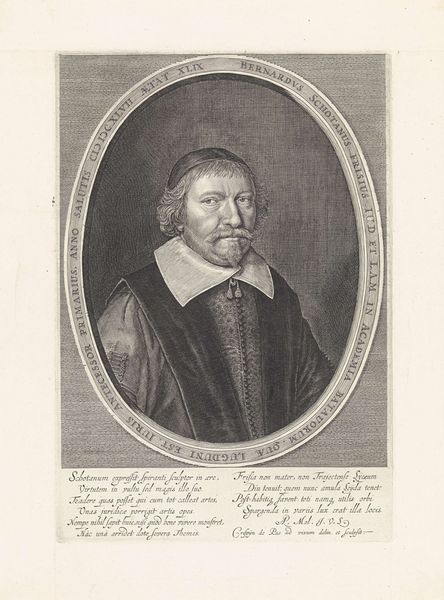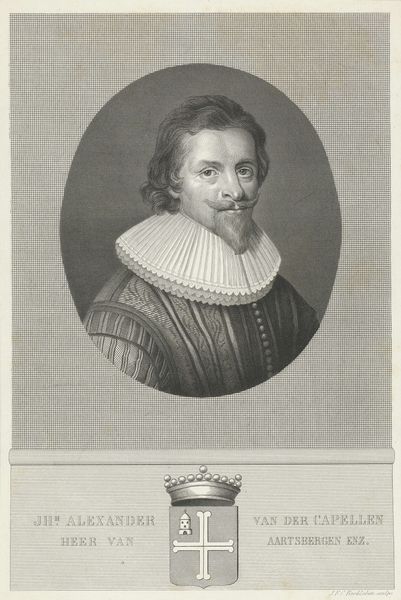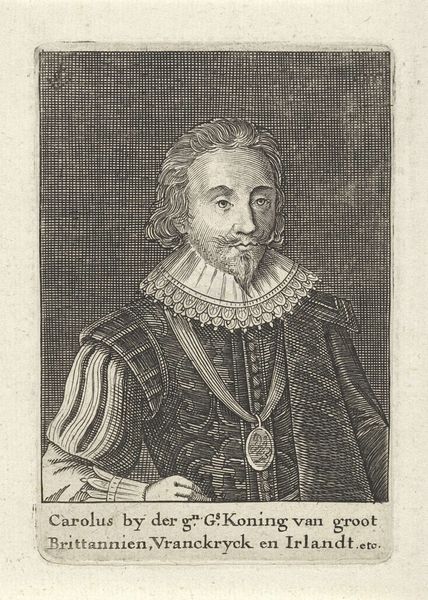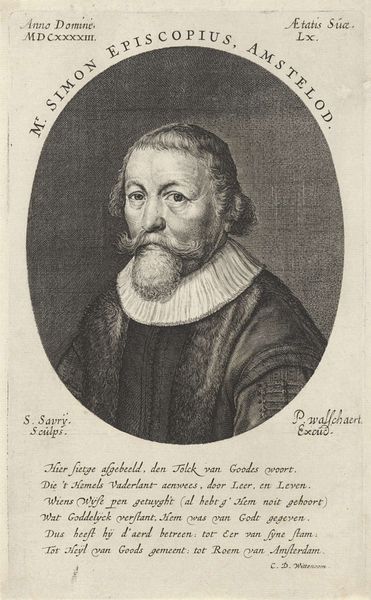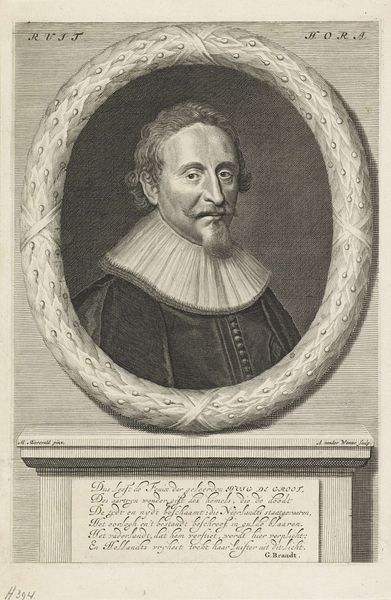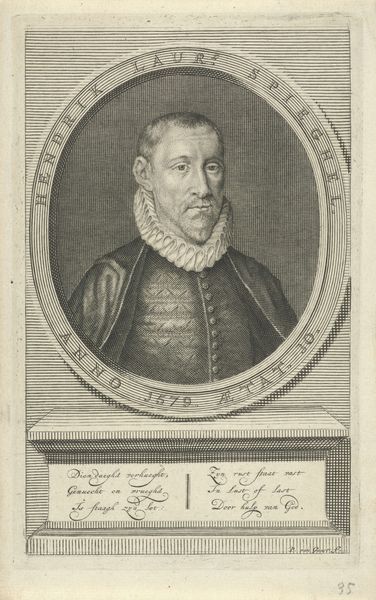
engraving
#
portrait
#
baroque
#
old engraving style
#
history-painting
#
engraving
Dimensions: width 149 mm, height 245 mm
Copyright: Rijks Museum: Open Domain
Editor: Here we have "Portret van Simon Bisschop," an engraving made sometime between 1659 and 1731 by Pieter van Gunst, residing at the Rijksmuseum. The stark contrast gives the whole thing a rather serious, almost austere mood, don't you think? What leaps out at you when you look at this? Curator: That severity is intriguing, isn’t it? It’s more than just aesthetic; it's philosophical. The engraver captures Simon Bisschop with a weight that reflects his position in the Remonstrant movement. Look at the circle around his portrait; it’s not just decorative but symbolic, encapsulating him in a moment of history, almost like preserving a butterfly in amber. But it makes me wonder, do you think the medium, engraving, adds to that sense of distance, that sense of history being… unyielding? Editor: Definitely! There’s something so permanent about an engraving, it’s like a statement etched in stone. It almost makes him seem more like an idea, a historical figure, than a person. Did that distance impact how people viewed historical figures at the time? Curator: That’s an excellent point. I suspect so, yes! The act of engraving transformed the subject. Engravings offered wider distribution of likenesses, they did not merely capture a face but they disseminated an image, making figures like Bisschop, accessible as public figures, symbols really. You lose a bit of intimacy, wouldn't you say? But you gain… a monumental presence, in a way. Editor: That’s fascinating! So, it’s not just a portrait; it’s a statement. Curator: Precisely. It is art carefully balanced between likeness, and legacy, something frozen, something felt. And the skill, so sharp, even centuries on. Wonderful.
Comments
No comments
Be the first to comment and join the conversation on the ultimate creative platform.
